With a name like Philodendron Silver Sword, you can be sure this plant’s going to have some stunning foliage.
And, you’d be right.
The serene silvery hue is contrasted beautifully by its sharp lance-shaped leaves. Like a vine of interlocking blades, Philodendron hastatum feels like something right of a fantasy novel.
The elegant foliage of this plant makes it a wonderful statement piece in the home and in terrariums alike.
Learn how to care for this exotic Aroid and how to grow those kitchen blade leaves into full-sized swords!
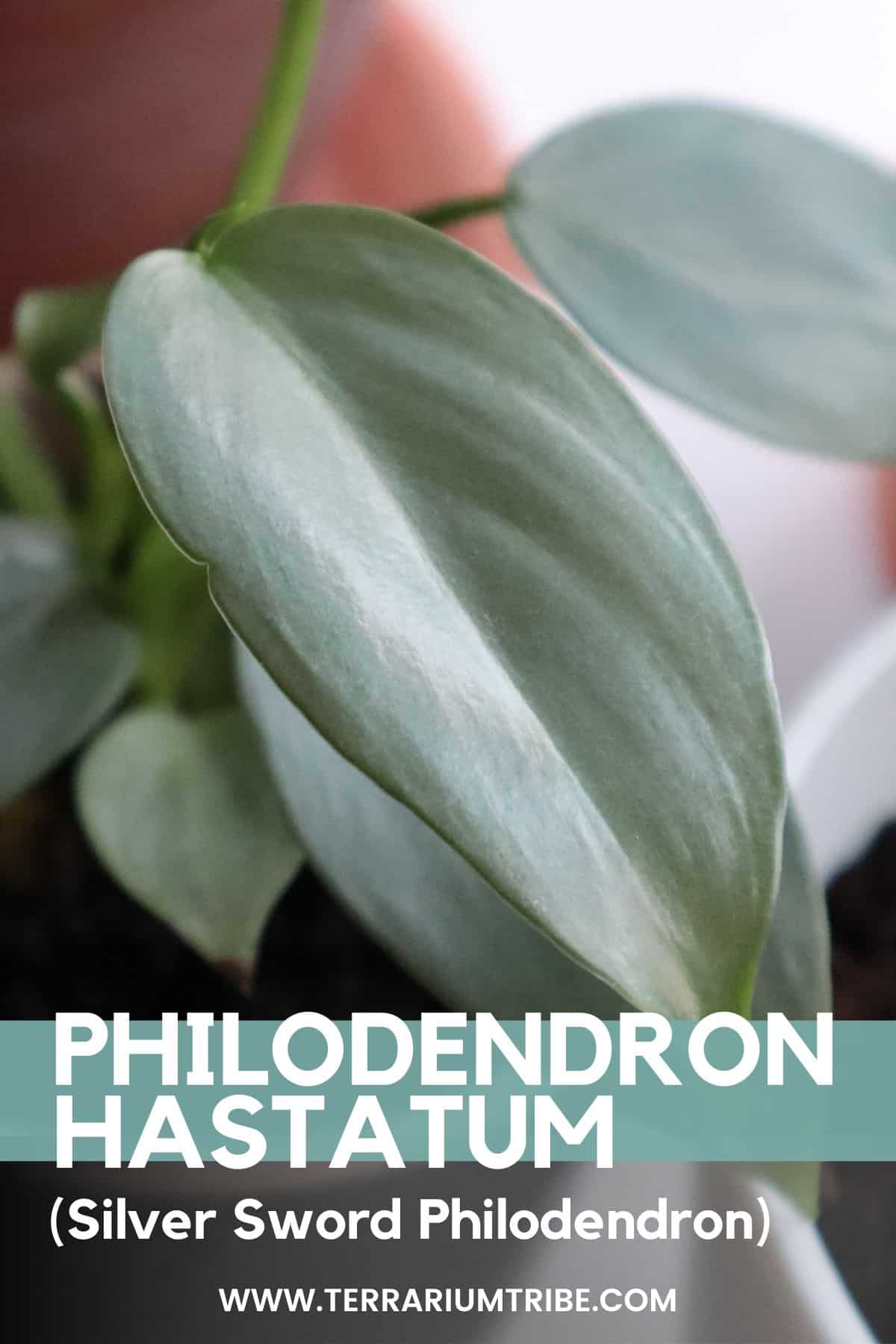
What is the Philodendron Silver Sword? (& Where is it From?)
You’d be forgiven for thinking this plant is a work of fiction (or at least some careful genetic tinkering), but it’s very much natural.
Native to the rainforests of Brazil, this tropical species is actually on an endangered species list because of habitat destruction – so getting this plant for your home really is an act of service in some ways…
As if we need an excuse for my plants, right?
Philodendron hastatum is a vine in the popular Aroid family, which means it comes with all the usual advantages of simple care, easy propagation, and multiple ways to grow it.
Whether you want an elegant trailing plant or a huge-leafed climber – you can have it all.
See how to grow this versatile plant below.
Where to Buy the Silver Sword Philodendron
See the links below to purchase from reputable terrarium plant shops and marketplaces (may include affiliate links).
Philodendron hastatum Care & Growth
At a Glance
| Plant Type | Vine, foliage, large |
| Lighting | Moderate to bright, indirect light |
| Temperature | 60-80°F (15-26°C) |
| Watering | Regular, even moisture |
| Humidity | Moderate to high humidity (50-85%) |
| Growth | 6 inches-3 feet (15 cm-1 meter) |
Light Requirements
In its native jungles of Brazil, this tropical vine enjoys moderate to bright indirect light as it weaves around under the rainforest canopy.
In the home, we can best recreate this environment with a North or East-facing window (if you’re in the Northern Hemisphere like me).
Just try to avoid direct sunlight where possible, as it can fade (or even scorch) the beautiful foliage.
Thankfully, it’s very easy to avoid as this Philodendron handles everything down to lower light conditions pretty well. You should be totally fine positioning this plant a little farther from a light source into a room.
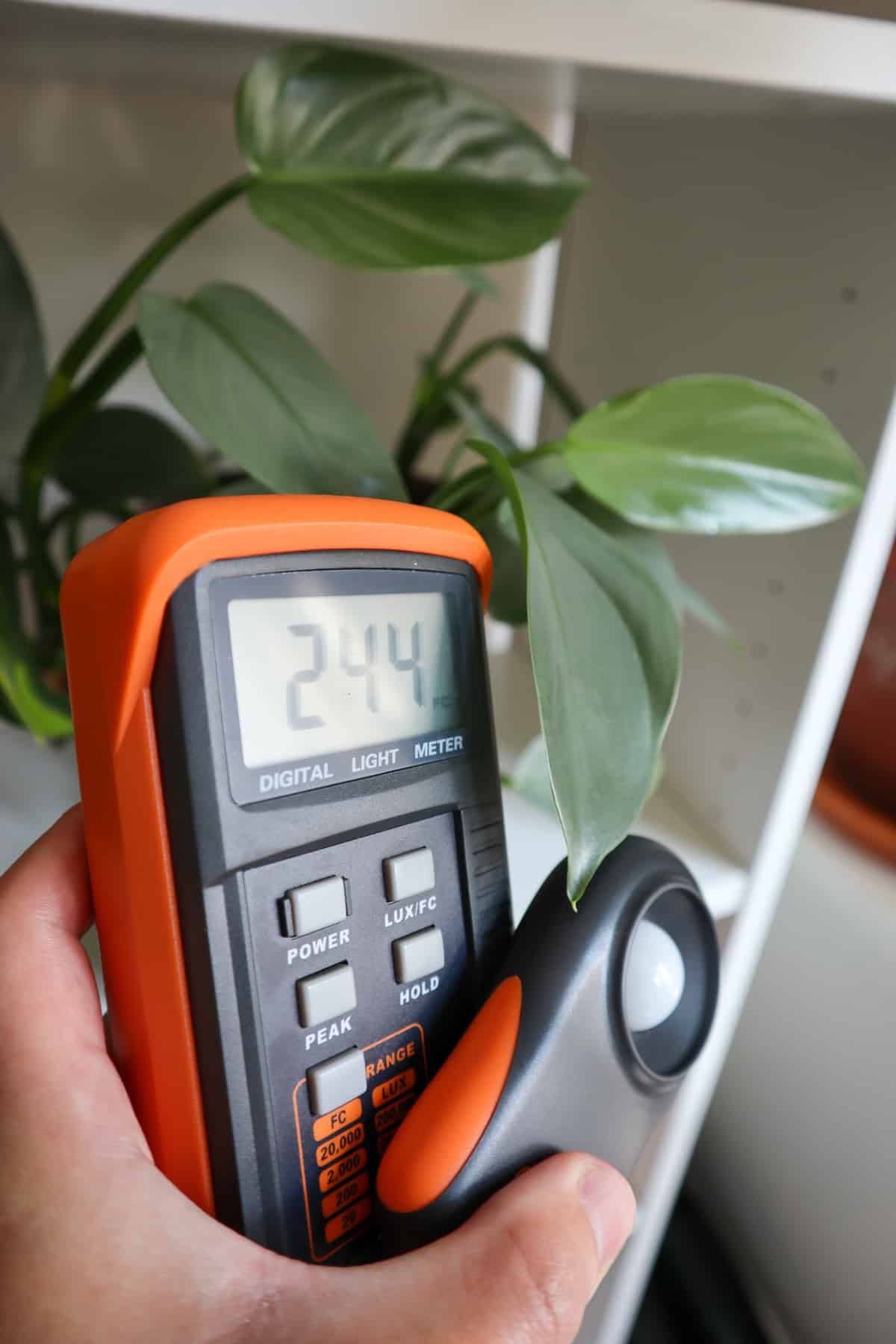
Mine’s still in a pretty bright spot near a South Facing bay window, but I’ve had it in a shadier spot in the room for a while and still gotten lots of growth from it.
Watering
As you might expect from an epiphytic tropical vine, the Philodendron hastatum has evolved to thrive in moisture.
Regular watering is welcome so long as its roots are aerated and not sitting/suffocating in water.
Using a pot with a drainage hole is the easiest way to prevent this from happening.
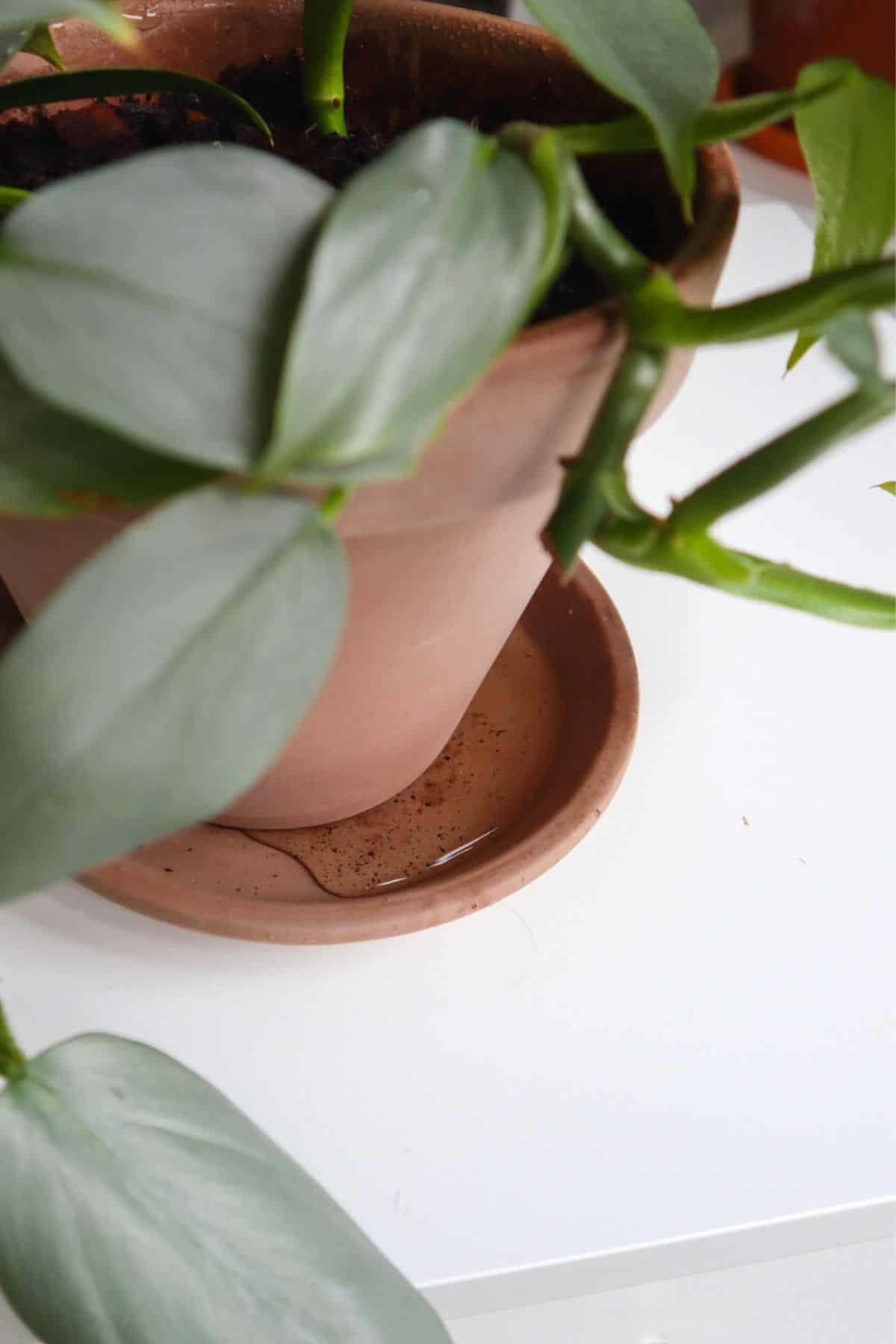
That being said, the Silver Sword is one of the few Philodendron that can withstand the occasional overwatering. Which is part of what makes this species such a good candidate for terrarium life.
Finding the right water balance in a terrarium is one of the bigger challenges of terrarium care, but the forgiving nature of this plant means it’ll still thrive even if you overdo it a little.
Substrate
Like other Aroids, the Philodendron Silver Sword prefers a loose, well-draining substrate that stays moist but aerated.
Although this plant loves its fair share of moisture, it’s not completely impervious to root rot and can fall to it if you don’t catch it.
The key is to balance water retention with drainage.
I like to use a coco coir base with my tropical plants, and I’d recommend using additives like earthworm castings (for nutrients) and orchid bark, perlite, or pumice (for drainage & aeration) in your mix to keep your Philodendron hastatum healthy and growing strong.
👉 Check out our tropical mix for a well-balanced substrate.
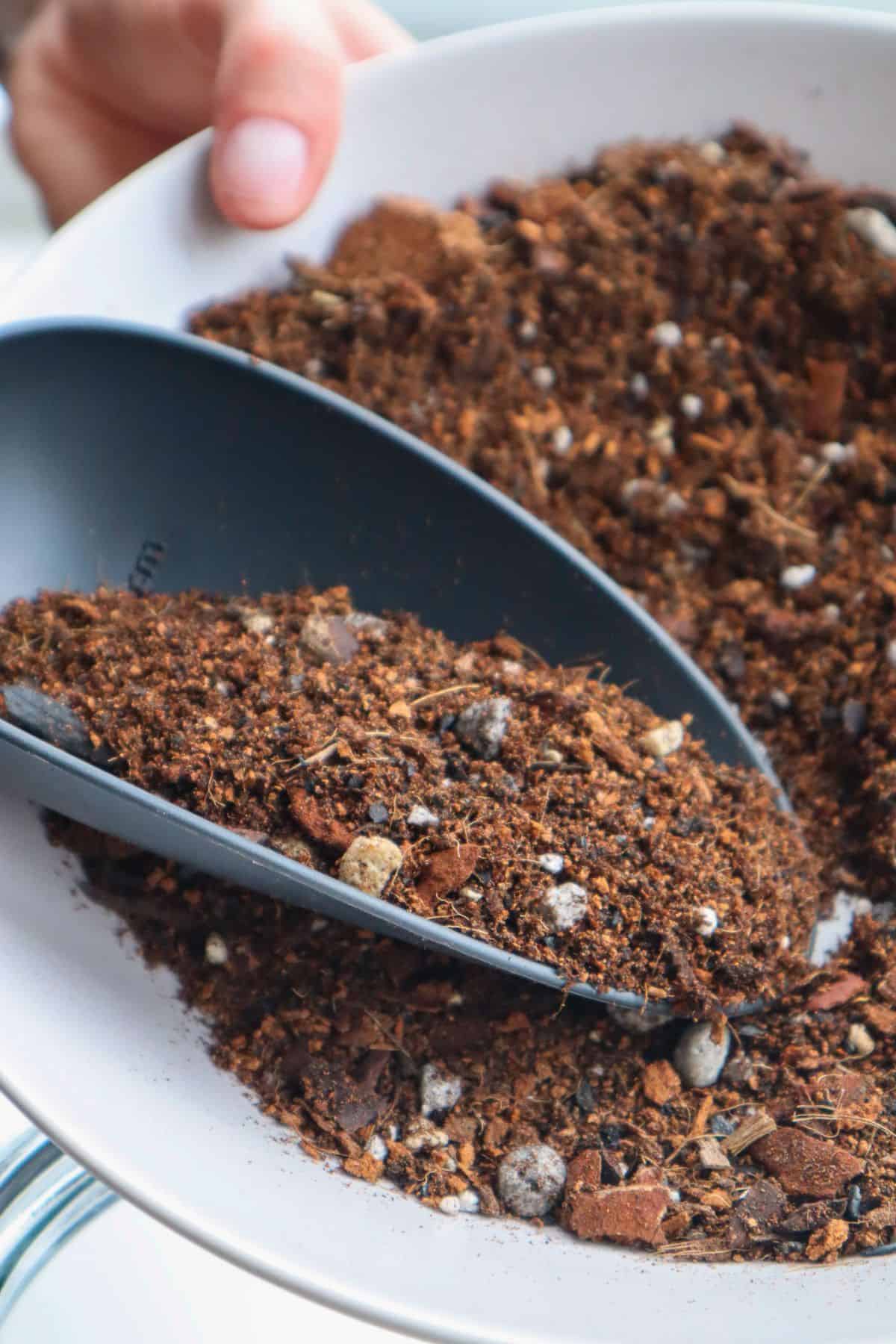
Temperature & Humidity
For such a tropical plant, this species is far from needy in terms of its temperature and humidity preferences.
Average room temperatures and humidity levels are often good enough for the Philodendron hastatum.
So, as indoor plants, you should be fine with anything above 60°F (15°C) and 50% humidity.
Though it’s really going to appreciate everything you can throw at it.
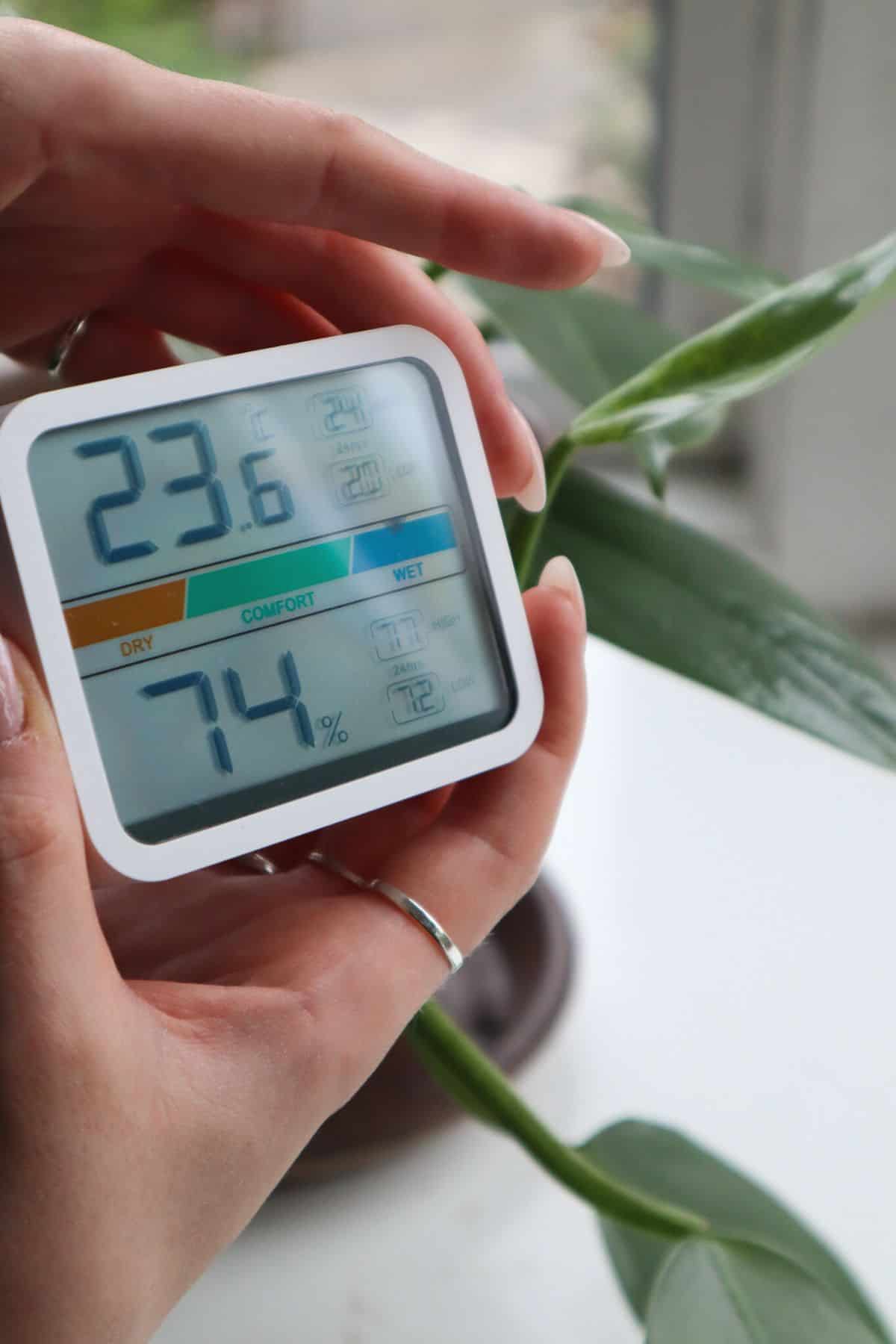
Growth
The Philodendron Silver Sword is what’s known as a hemiepiphytic plant.
Meaning it begins life as a terrestrial plant (with a typical root system in the soil) but later becomes an epiphyte as it climbs nearby trees to reach the sun above the rainforest canopy.
Cool right?
There it uses its aerial roots to find moisture and nutrients instead. It can later become fully epiphytic if it reaches the point where it severs its connection to the underground root system.
So, though this plant happily grows as a trailing plant, you’ll need to give it something to climb if you want a mature plant with gorgeous big leaves.
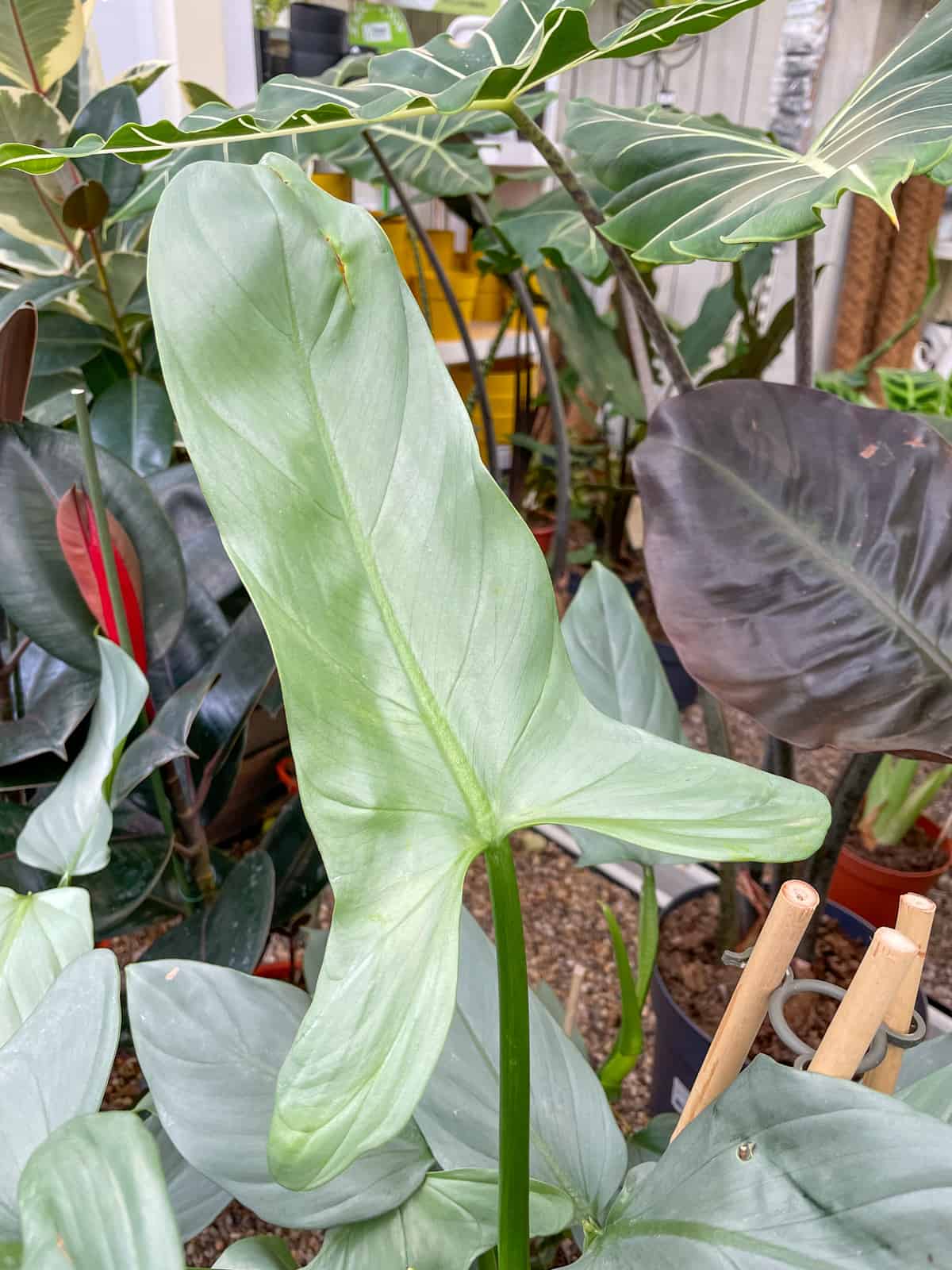
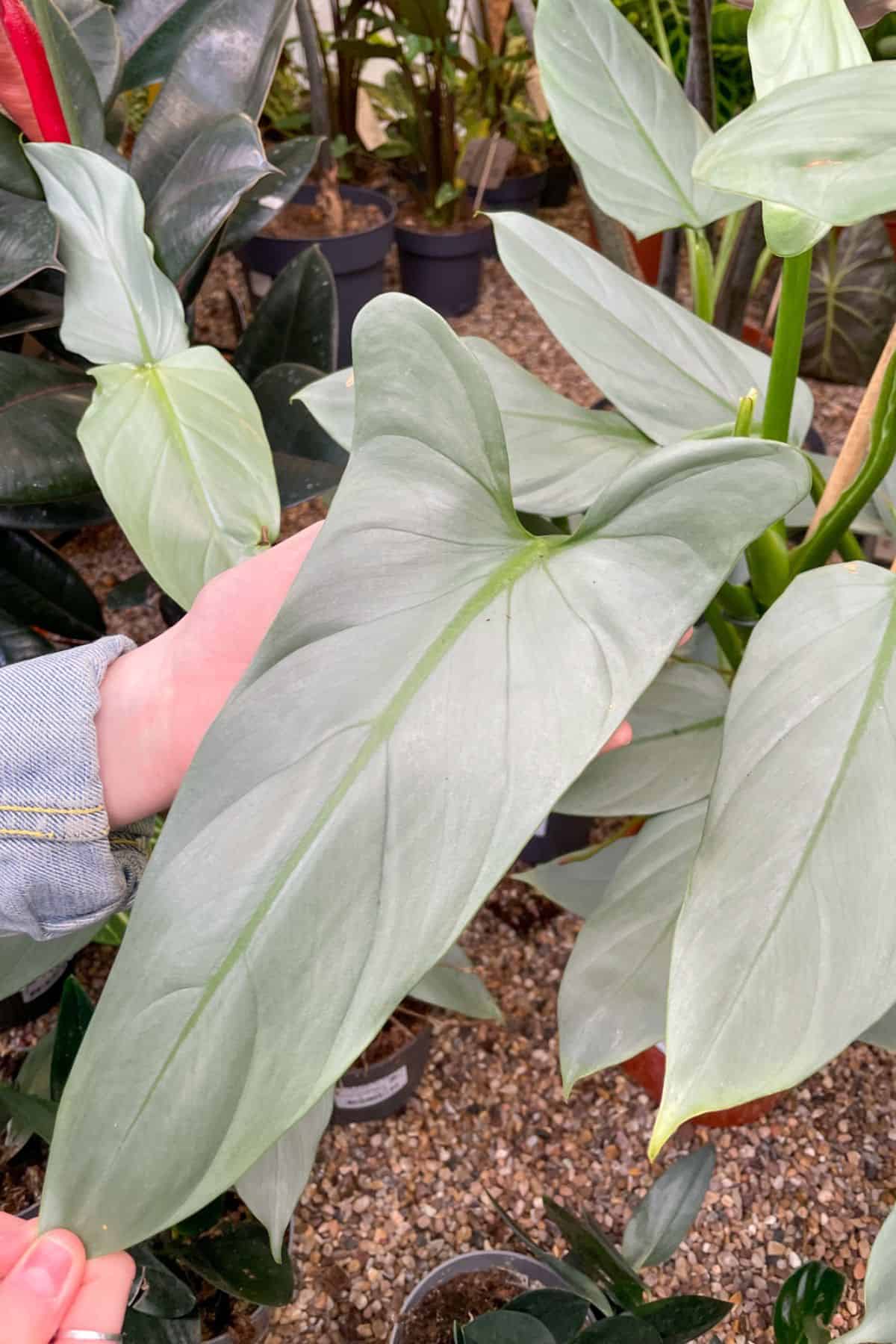
Our plant has a long way to go before it gets there, but it’s coming along nicely.
In just 8 months, it’s grown from this little darling to a thriving vine that’s pushing out some decent-sized leaves.
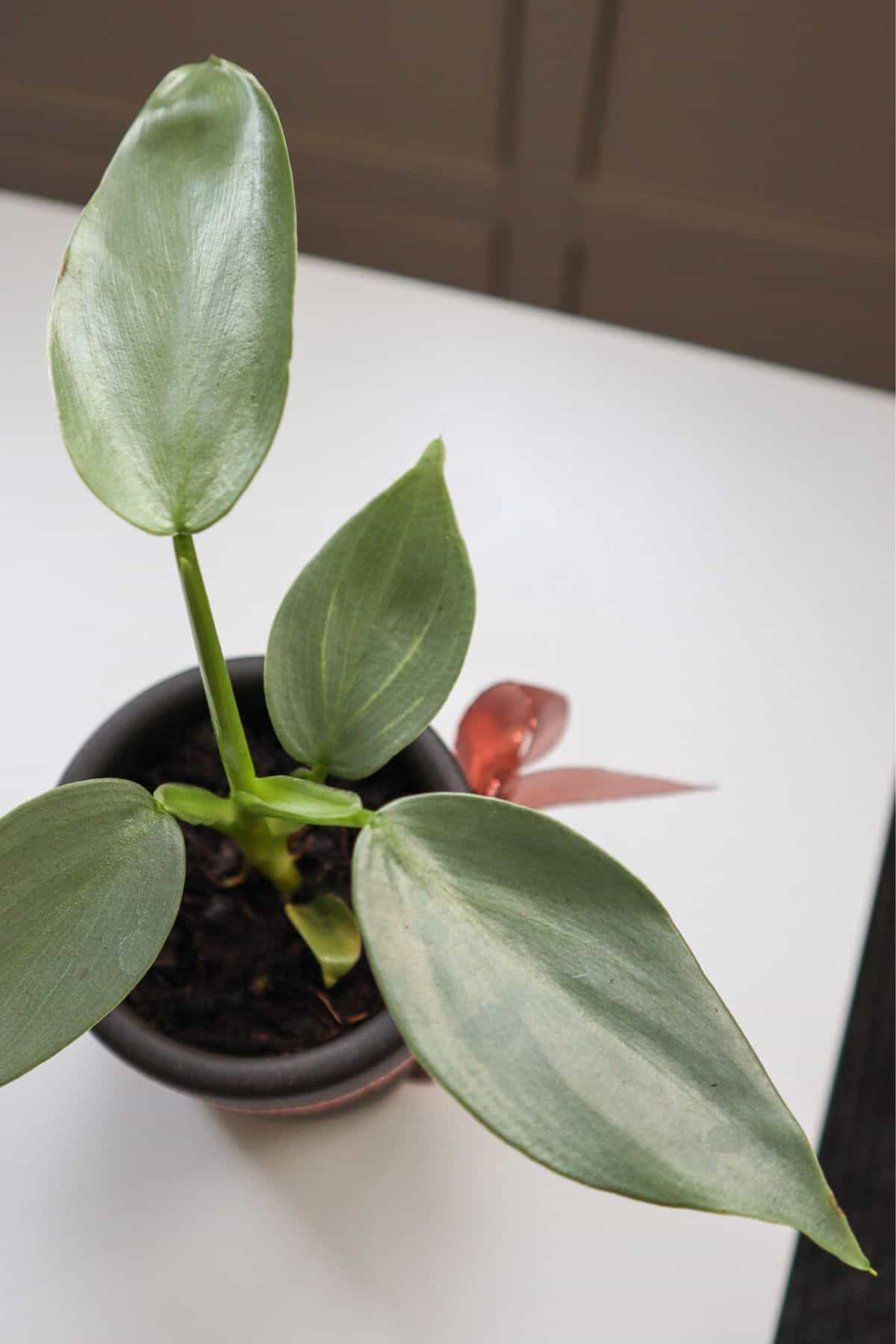
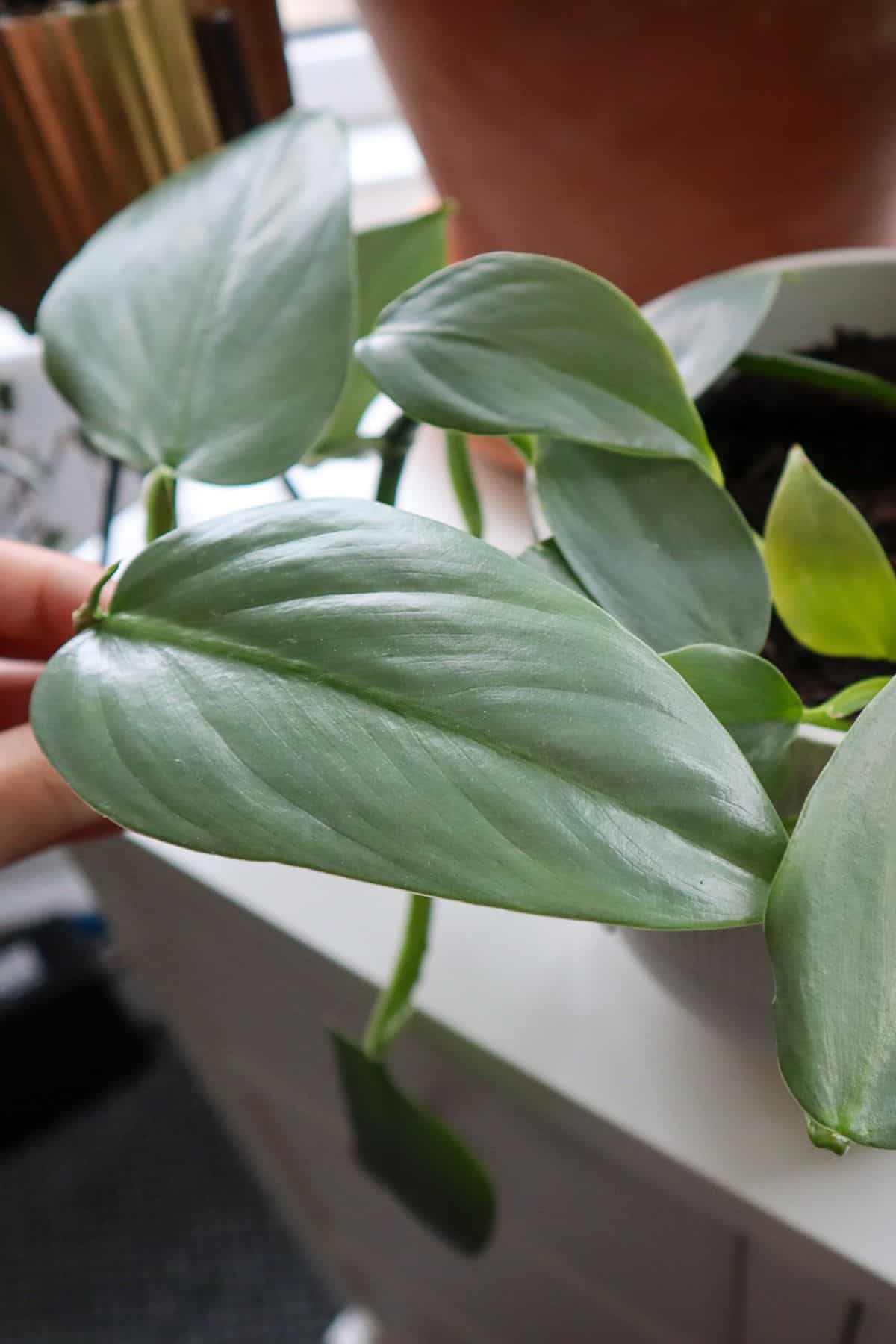
The Silver Sword can actually change the shape of its leaves as it gets older, going from a sword-like shape to more of an arrowhead.
When this happens, the Philodendron starts to look a little more like a Syngonium, and I’m living for it!
Which is why I’m planning to get my plant a moss pole to climb as soon as possible.
Propagation
As with most Philodendron or other epiphytes, this plant prefers to propagate via stem cutting.
Before the Silver Sword puts out full-sized aerial roots, they begin as nodes. These little brown bumps on the stems of your plants are vital during propagation, so make sure one or two are toward the bottom of your cutting so they can turn into regular roots.
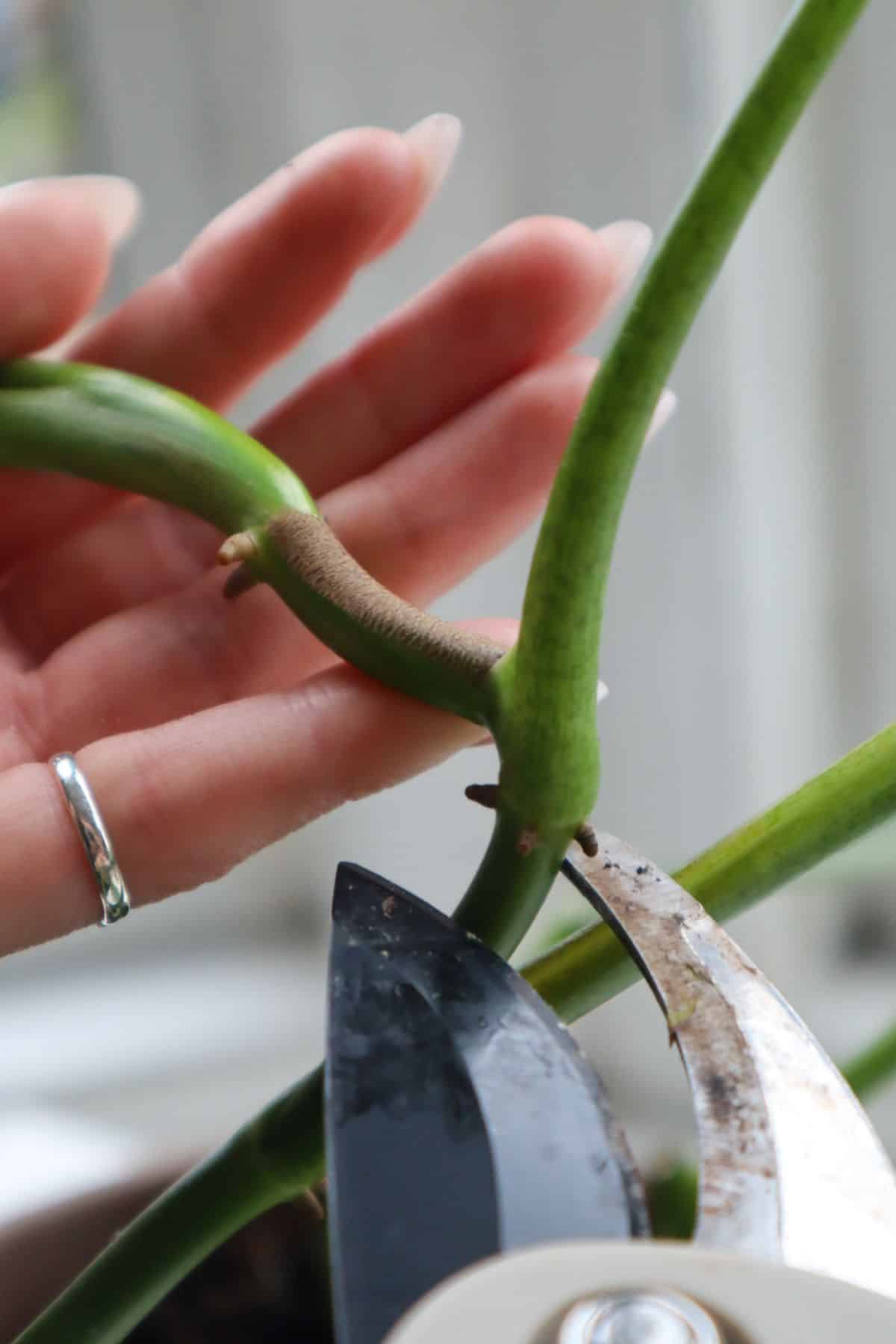
You’ll often be able to take a few of these cuttings at once if you cut further up the vine.
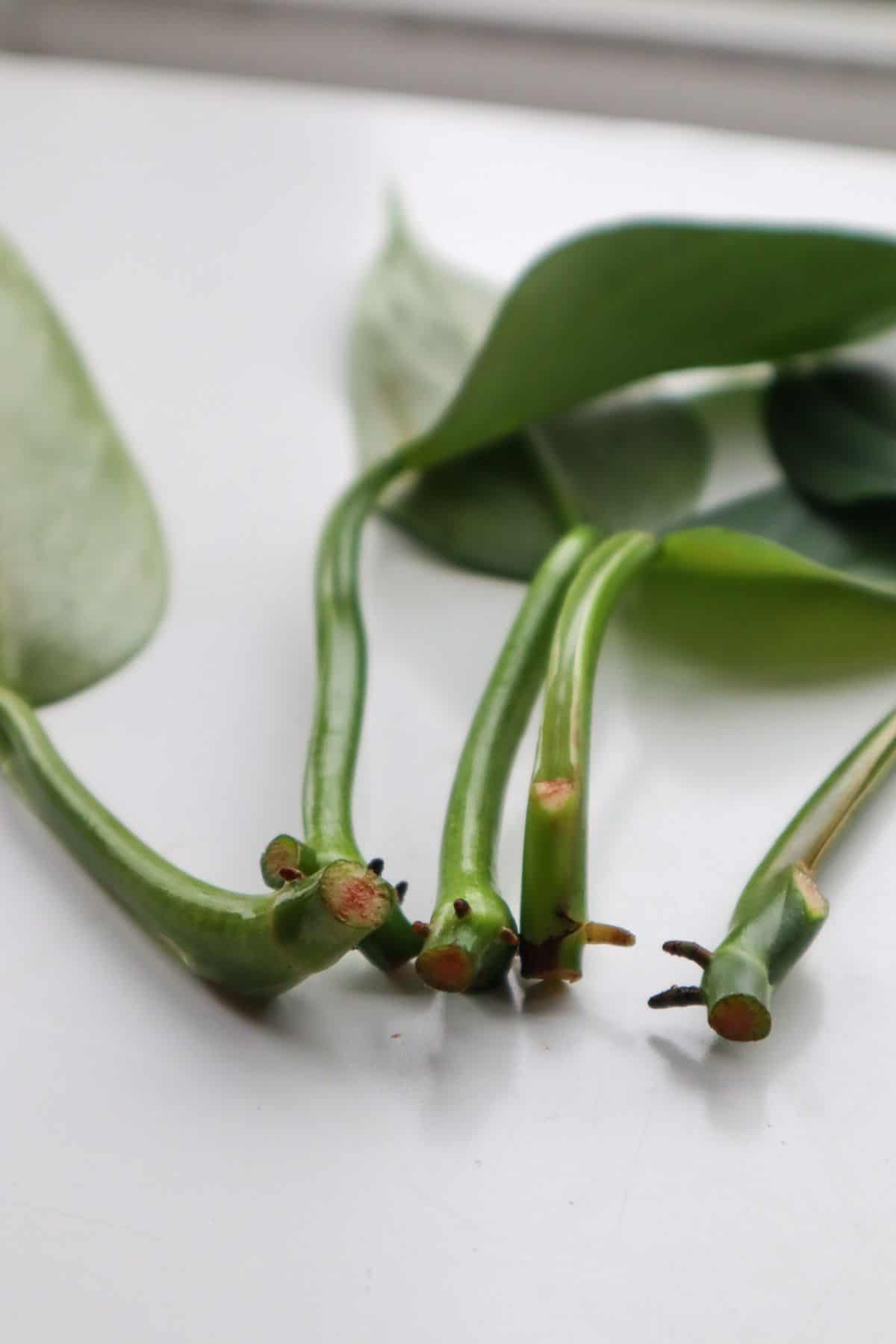
You can put your cutting in a hydroponic set-up (pop into a glass with some water) or a semi-hydroponic (everything from before, but some sphagnum or perlite thrown into the mix) arrangement too.
This plant isn’t picky!
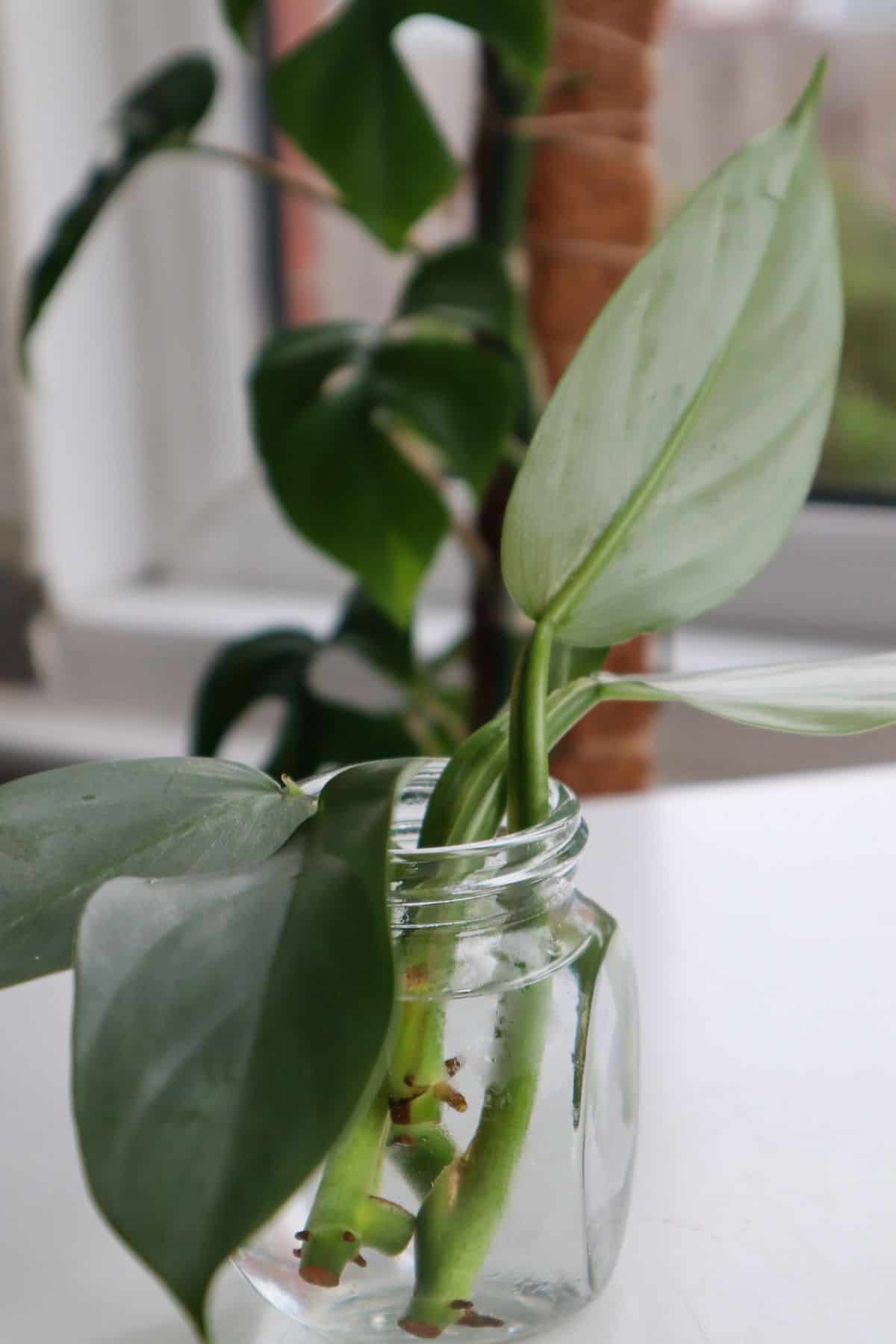
They root up quickly, usually in just a couple of weeks.
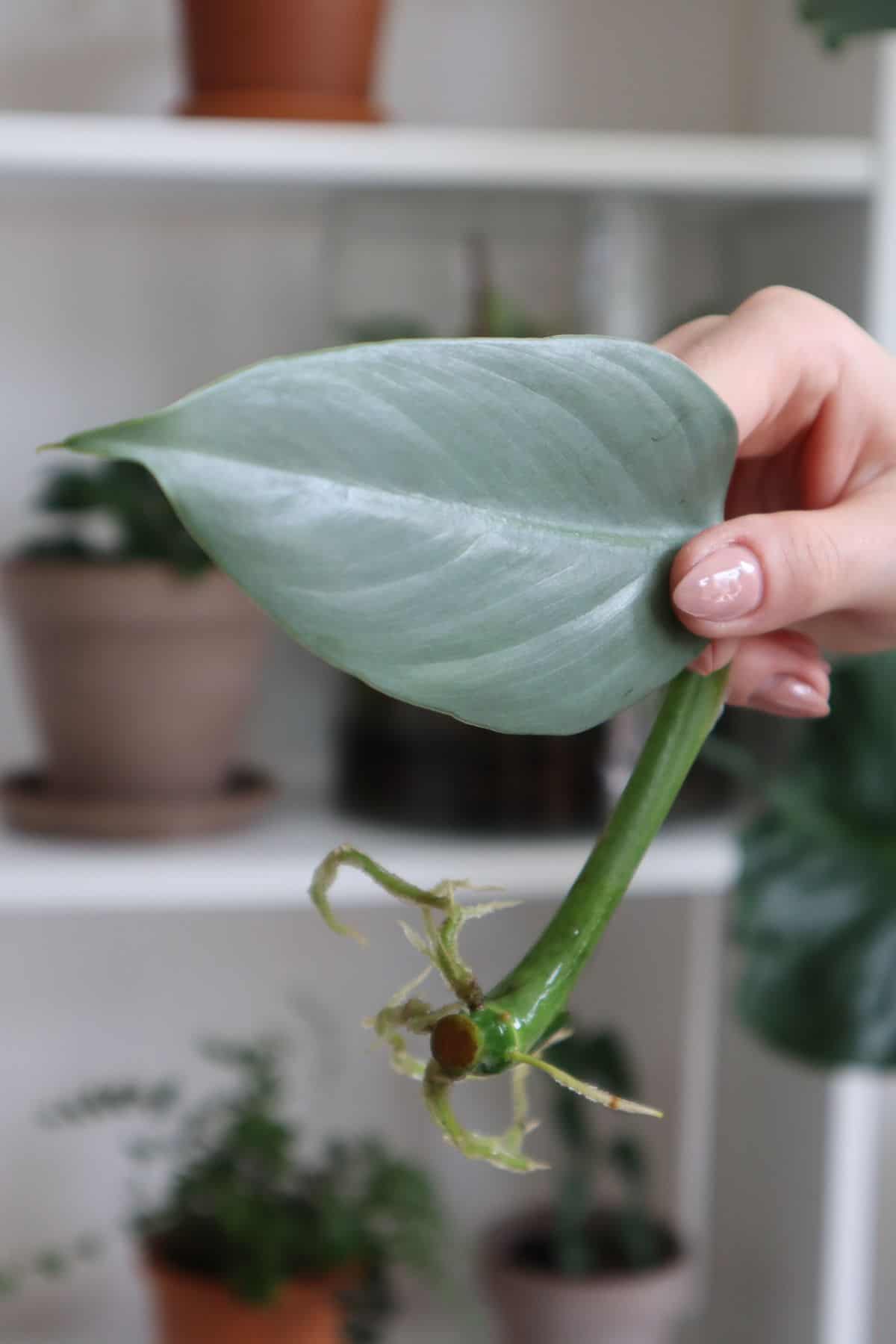
Varieties & Similar Plants
The bluish-silver color of the Philodendron hastatum is eye-catching and rare but not as uncommon as you might think.
This plant is often confused with and misclassified as the Epipremnum pinnatum, aka the Cebu Blue Pothos.
For other suitable terrarium Philodendron species, check out Philodendron micans (or its classic version, Philodendron hederaceum), Philodendron verrucosum, Philodendron Brasil, and Philodendron Birkin.
Frequently Asked Questions
These days, the Silver Sword Philodendron is commercially available all over the world and isn’t considered to be a particularly rare plant. Though, they are rarer in the wild due to habitat destruction.
Philodendron Silver Sword are fairly fast growers and, under ideal conditions, can rapidly grow long vines and large leaves.
Both yellow leaves and droopy leaves are signs of overwatering. If the foliage on your Philodendron Silver Sword is turning yellow, it’s time to pull back on your watering schedule and allow more to dry.
Philodendron are very difficult to make flower in the home, though it’s possible in the wild once they reach full maturity.
Giving a Philodendron Silver Sword something to climb is the best way to help it mature and produce those larger arrow-shaped leaves.
